I think I’ve seen so many non-code-compliant doors that I’m becoming numb to them. In the old days I would be spurred into action by the sight of a blocked exit or propped-open fire door. Yesterday I was at the local bagel joint and I saw their marked emergency exit blocked with stored high-chairs. No surprise. I went to my chiropractor’s office and in the 3-story stairwell, two doors were propped open by the construction crew doing a 2nd-floor office fit-up, and the third floor door’s latchset had been removed and replaced with a push plate and pull. Ho-hum.
Every time I go to the Boston Chapter CSI meeting, I park in a parking garage that is above several restaurants and businesses. It’s a completely enclosed garage – not the type with open sides, and the stair doors are all fire-rated. They are also ALL held open – with coat hangers, rope, wedges, or because the closer arm has been removed. Some of the fire exit hardware is missing pieces, which doesn’t really matter since the doors won’t close during a fire anyway. What’s the point of a working latch if the door’s wide open? Could there be a fire in a parking garage? Of course! Will this exit enclosure provide a safe means of egress out of the building? No.
Last month, one of our end user salespeople told me about a facility he had visited that day – also a parking garage. This garage was connected to an office building for a government agency, where the government employees could be at risk of harm from their “clients.” In other words, if the client didn’t like the outcome of their interaction with the government employee, they might walk into the parking garage through the opening used by vehicles, and try to gain access to the facility via the connecting stairwell.
To prevent this, the facility had disabled the panic hardware on the doors leading from the parking garage to the stairwell. The touchpad would not retract the latch, and the only way to enter the stairwell was to present a proximity card which would release an electric strike, allowing the latchbolt to pass through the keeper. The facility manager’s position was that the application was safe because the electric strike would release upon fire alarm and allow egress.
The first problem with that statement is that in most applications (including this one), it is not acceptable to allow egress ONLY on fire alarm – you have to allow egress all the time. What if there was an angry client in the garage and the employee lost her purse (and card) in the scuffle? The only way out is to run down the vehicle ramp, and around and around all four floors until you get to the vehicle access door. The second problem is that if the electric strike releases on fire alarm, that means that it’s a fail safe strike. Electric strikes used on fire doors must be fail secure, so the strike keeper will keep the door positively latched during a fire.
I have honestly never had a facility say that they know their door isn’t code-compliant and they want to keep it that way. Usually when the problem is brought to their attention, they want to know how to fix it. In this case, the stair doors could have delayed egress hardware, with the card reader shunting the delay and alarm. Or better yet, roll-up doors could be added to secure the exterior vehicle access doors and keep unauthorized people out of the garage.
You need to login or register to bookmark/favorite this content.


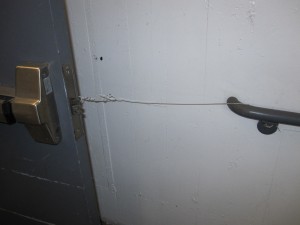
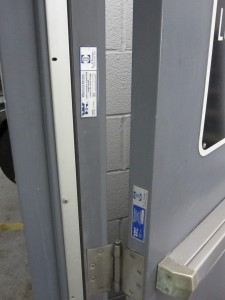
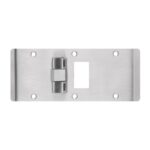

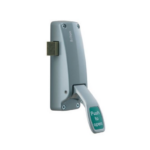
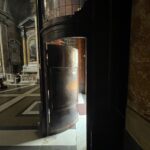

I think if you look again on the ones at your CSI meeting they are not Temp rise either…as you said ho-hum
Hi Brendan –
I think you’re right! Good eye!
– Lori
Lori,
Say there is a pedestrian door from the street that you badge in to get to the garage, then another door that takes you either up or down the stairwell. Does that second door need to remain closed at all times?
Hi Anthony –
That’s a tough question to answer without more information. Is the second door a fire door? If yes, then it needs to either be self closing, automatic closing, or power operated. If it is automatic closing it can be held open but must release and close upon fire alarm or smoke detection.
– Lori